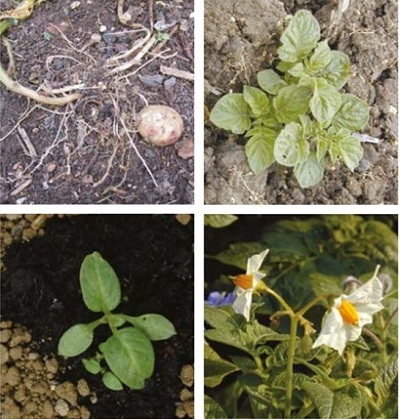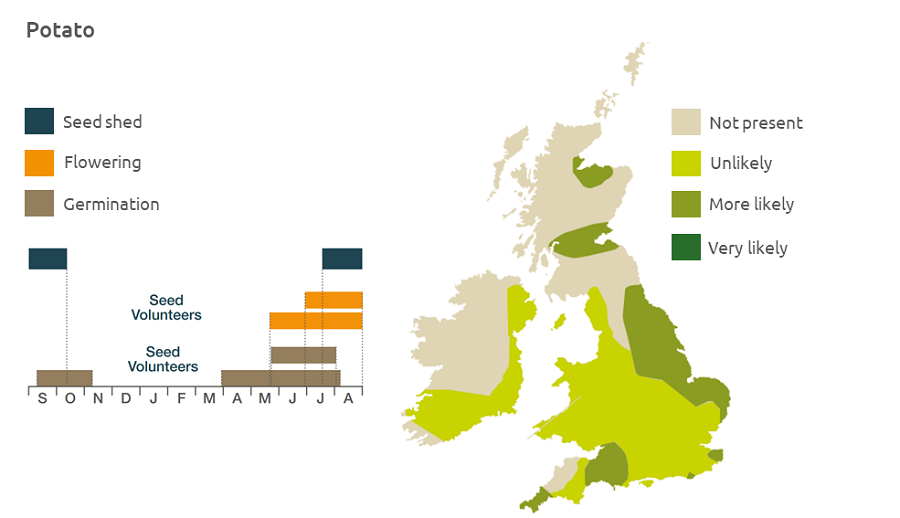- Home
- Knowledge library
- Distribution and biology of potato volunteer weeds in the UK
Distribution and biology of potato volunteer weeds in the UK
Potato can occur as a volunteer weed from previous crops or domestic waste. Green parts of the plant are poisonous to humans and livestock. Find out how to identify and control it.
Control of volunteer potatoes in vegetable crops
Overview
Volunteer potatoes (Solanum tuberosum) can be very competitive weeds in subsequent crops. They develop from tubers left in the soil or as seedlings from true seeds in spring.
- It is particularly competitive in spring crops
Description
It is an upright dicotyledon up to 1 m high, with stolons developed into tubers at or just below the soil surface. It is very robust, with leaves divided in oval leaflets. Flowers are white or purple. The plant may develop large spherical poisonous fruits that resemble green tomatoes.
Key features
It contains the poison solanine, in the green parts of the plant and in tubers exposed to light, which can be fatal to humans and livestock.

Location and life cycle

Geographic distribution
Potato usually occurs as volunteers from previous cropping and so is most likely to be found in the arable areas to the east of the British Isles. It also grows in areas where domestic waste has been left.
Soil type
Potato prefers sandy loams, silt loams, loams and peat soils.
Seed statistics
- Seeds/plant: 50–200
Management
The best control is good harvesting practice in potato crops. Pre-harvest treatment with glyphosate is effective if the plants are still green. In most vegetable crops, fruit crops and legumes only physical control is possible. Otherwise using glyphosate at or near flowering of potato plants is the most effective chemical treatment. Potatoes do not persist in dense crops such as oilseed rape or grassland.
For advice on herbicides, please speak with your agronomist or adviser.
When was this information last updated?
This page is based on content from the encyclopaedia of arable weeds publication. Since it was first released in 2008, the publication has been redesigned several times but not revised. However, it remains a good foundation for general information on the distribution and biology of weeds.

